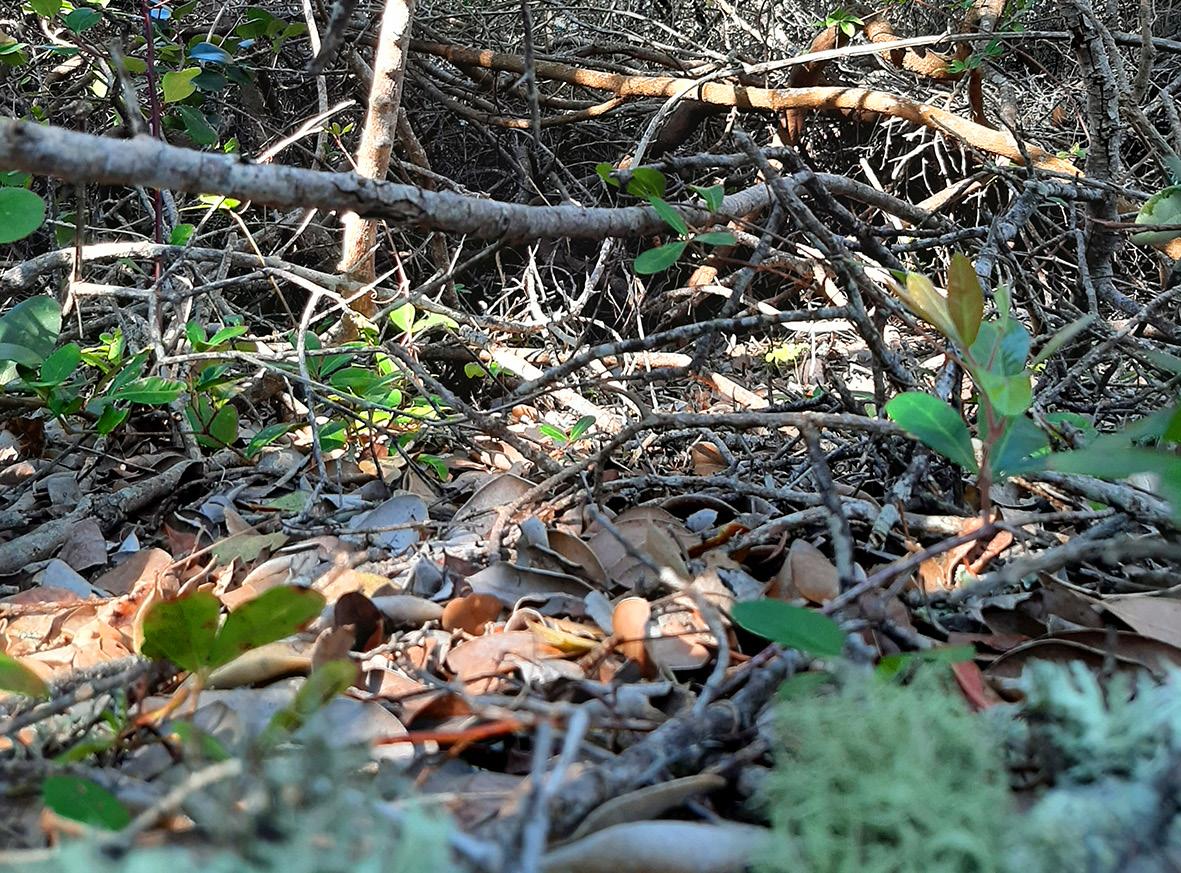
3 minute read
Clearing bush in urban plots and open spaces
By Richard Cowling

Advertisement
WHAT DOES IT MEAN FOR BIODIVERSITY?
There has in recent months been some lively debate on the pros and cons of clearing plots of indigenous thicket vegetation to reduce the risk of wildfires in the Greater St Francis region.
While this practice may seem to be brutal for nature, this is not the case. In fact, clearing plots – and other open spaces with the urban footprint - of Blue Kunibush
(taaibos), Bastard Spikethorn and other pioneer thicket species - in addition to assisting with fire-proofing our villages, is essential for maintaining biodiversity.
BEAR IN MIND THAT I AM REFERRING TO THE CLEARING OF HEDGE-LIKE THICKET, AS IN THE PHOTO BELOW, AND NOT TO TALL SHRUBS AND LOW TREES OF KERSHOUT, WHITE MILKWOOD AND BALD KOEBOOBERRY, WHICH POSE A LESSER FIRE RISK THAN HEDGE THICKET.
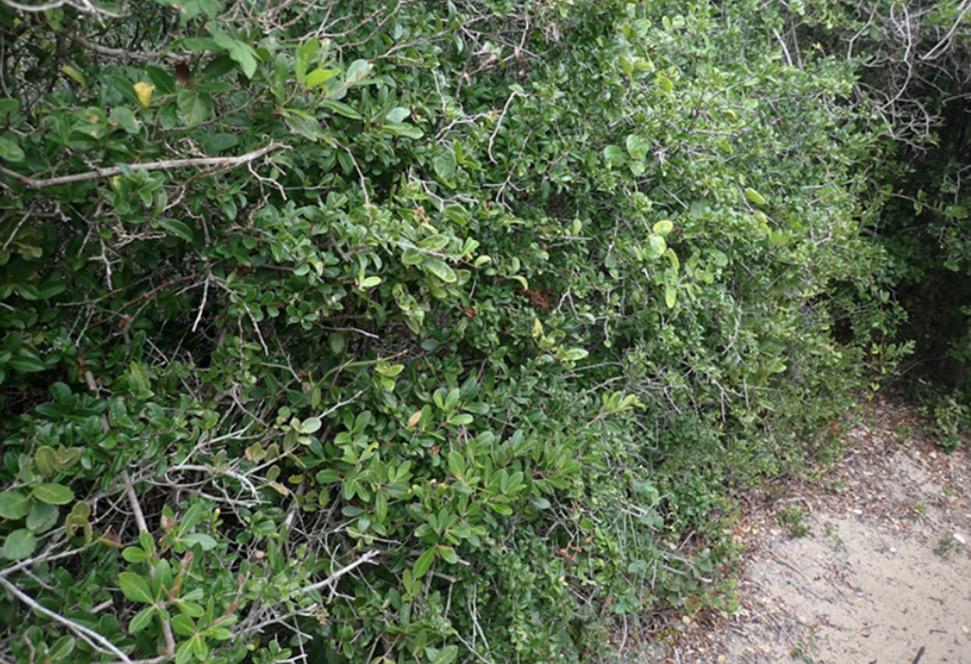
A thicket hedge comprising an impenetrable tangle of Bastard Spikethorn, Dune Koko Tree and Baboon Grape. This vegetation will burn intensely under the right conditions, such as occurred in the fire of Feb 2016.
LONG AGO, BEFORE THE ADVENT OF HOLIDAY HOMES, THE COASTAL DUNES OF THE KOUGA WERE REGULARLY SWEPT BY FIRES.
Some of these fires were exceptionally intense, consuming all vegetation in their path; others were mild, burning only the highly flammable fynbos and hedge thicket, missing the taller stands of Kershout and White Milkwood.
Many of these fires were started by lightning but many others were lit by humans – hunter-gatherers burning veld to attract game or make edible bulbs more apparent; or Khoe-khoe and Dutch herders, using fire to produce more nutritious pasture for their livestock.
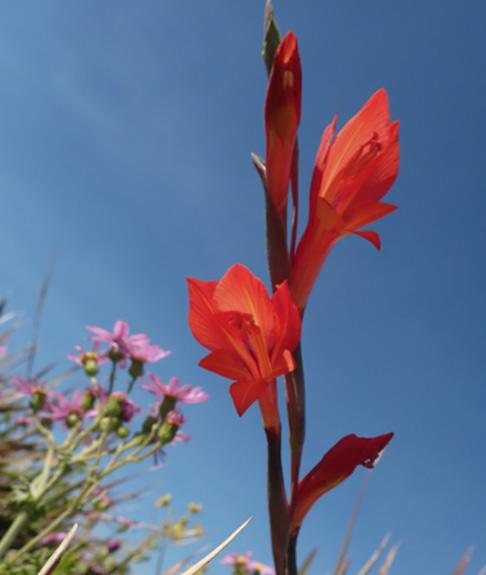
A sample of the 92 rare and endemic dune fynbos & grassland plants in our region: Eastern Cape Flame
More recently, since the late 1950s, predominantly urban creatures began colonising the dune coast, seeking sun, surf and an apparently boundless booty of fish. They, along with many learned scientists, believed that veld fires were an unnatural phenomenon, best suppressed like the mini skirt or television.
THUS, BEGAN AN ERA OF FIRE SUPPRESSION, LASTING UP UNTIL THE PRESENT DAY. WHAT HAVE BEEN THE CONSEQUENCES OF THIS FOR DUNE VEGETATION AND BIODIVERSITY. PRETTY BAD, I’M AFRAID. LET ME EXPLAIN.
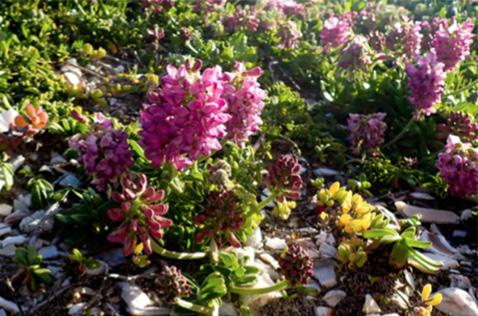
Eastern Dune Bladderpod
In the absence of fire, the more open ecosystems (fynbos and grassland) are invaded by thicket shrubs, initially hedge-forming species.
CREATING A DENSE CANOPY, THE INVADING THICKET SHADES OUT THE SPECIES THAT REQUIRE SUNNY, OPEN CONDITIONS.
Herein lies the problem. All the rare and endemic plants of our coast, comprising a massive species, are sun-lovers; they are out shaded by thicket.
A thicket hedge comprising an impenetrable tangle of Bastard Spikethorn, Dune Koko Tree and Baboon Grape. This vegetation will burn intensely under the right conditions, such as occurred in the fire of Feb 2016.
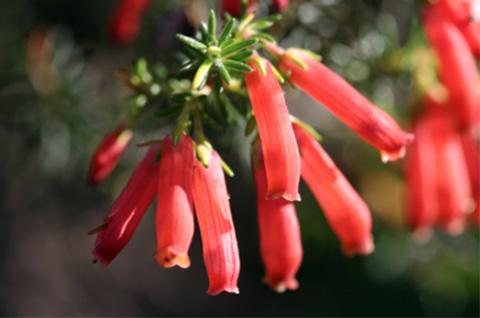
Greensepal Heath
MOREOVER, MANY ARE STIMULATED TO FLOWER AND GERMINATE IN RESPONSE TO FIRE; THEIR PERSISTENCE IS INTIMATELY LINKED TO THE OPEN CONDITIONS CREATED BY THE REMOVAL OF VEGETATION.
The same applied to the myriad of insects that feed on and pollinate these plants.
So, clearing bush from undeveloped land within our urban regions is helping to restore a balance between closed-canopy and open ecosystems, and thereby maintain distinctive biodiversity of our dunes. There is still plenty of thicket about to provide habitat for thicket-loving species such as Burchell’s Coucal, Grey Mongoose and Bushbuck, to mention a few.
A sample of the 92 rare and endemic dune fynbos & grassland plants in our region: Eastern Cape Flame






